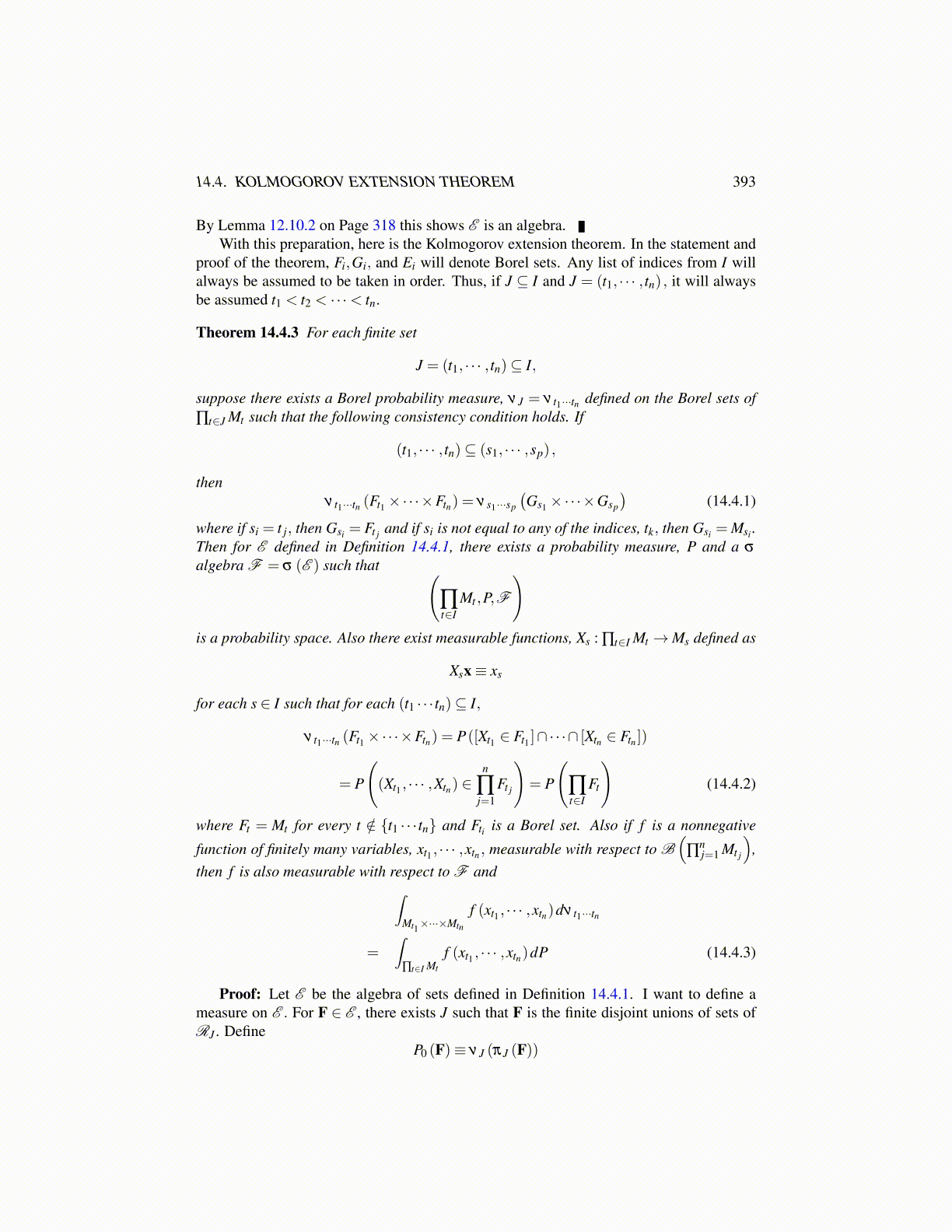
14.4. KOLMOGOROV EXTENSION THEOREM 393
By Lemma 12.10.2 on Page 318 this shows E is an algebra.With this preparation, here is the Kolmogorov extension theorem. In the statement and
proof of the theorem, Fi,Gi, and Ei will denote Borel sets. Any list of indices from I willalways be assumed to be taken in order. Thus, if J ⊆ I and J = (t1, · · · , tn) , it will alwaysbe assumed t1 < t2 < · · ·< tn.
Theorem 14.4.3 For each finite set
J = (t1, · · · , tn)⊆ I,
suppose there exists a Borel probability measure, νJ = ν t1···tn defined on the Borel sets of∏t∈J Mt such that the following consistency condition holds. If
(t1, · · · , tn)⊆ (s1, · · · ,sp) ,
thenν t1···tn (Ft1 ×·· ·×Ftn) = νs1···sp
(Gs1 ×·· ·×Gsp
)(14.4.1)
where if si = t j, then Gsi = Ft j and if si is not equal to any of the indices, tk, then Gsi = Msi .Then for E defined in Definition 14.4.1, there exists a probability measure, P and a σ
algebra F = σ (E ) such that (∏t∈I
Mt ,P,F
)is a probability space. Also there exist measurable functions, Xs : ∏t∈I Mt →Ms defined as
Xsx≡ xs
for each s ∈ I such that for each (t1 · · · tn)⊆ I,
ν t1···tn (Ft1 ×·· ·×Ftn) = P([Xt1 ∈ Ft1 ]∩·· ·∩ [Xtn ∈ Ftn ])
= P
((Xt1 , · · · ,Xtn) ∈
n
∏j=1
Ft j
)= P
(∏t∈I
Ft
)(14.4.2)
where Ft = Mt for every t /∈ {t1 · · · tn} and Fti is a Borel set. Also if f is a nonnegative
function of finitely many variables, xt1 , · · · ,xtn , measurable with respect to B(
∏nj=1 Mt j
),
then f is also measurable with respect to F and∫Mt1×···×Mtn
f (xt1 , · · · ,xtn)dν t1···tn
=∫
∏t∈I Mt
f (xt1 , · · · ,xtn)dP (14.4.3)
Proof: Let E be the algebra of sets defined in Definition 14.4.1. I want to define ameasure on E . For F ∈ E , there exists J such that F is the finite disjoint unions of sets ofRJ . Define
P0 (F)≡ νJ (πJ (F))